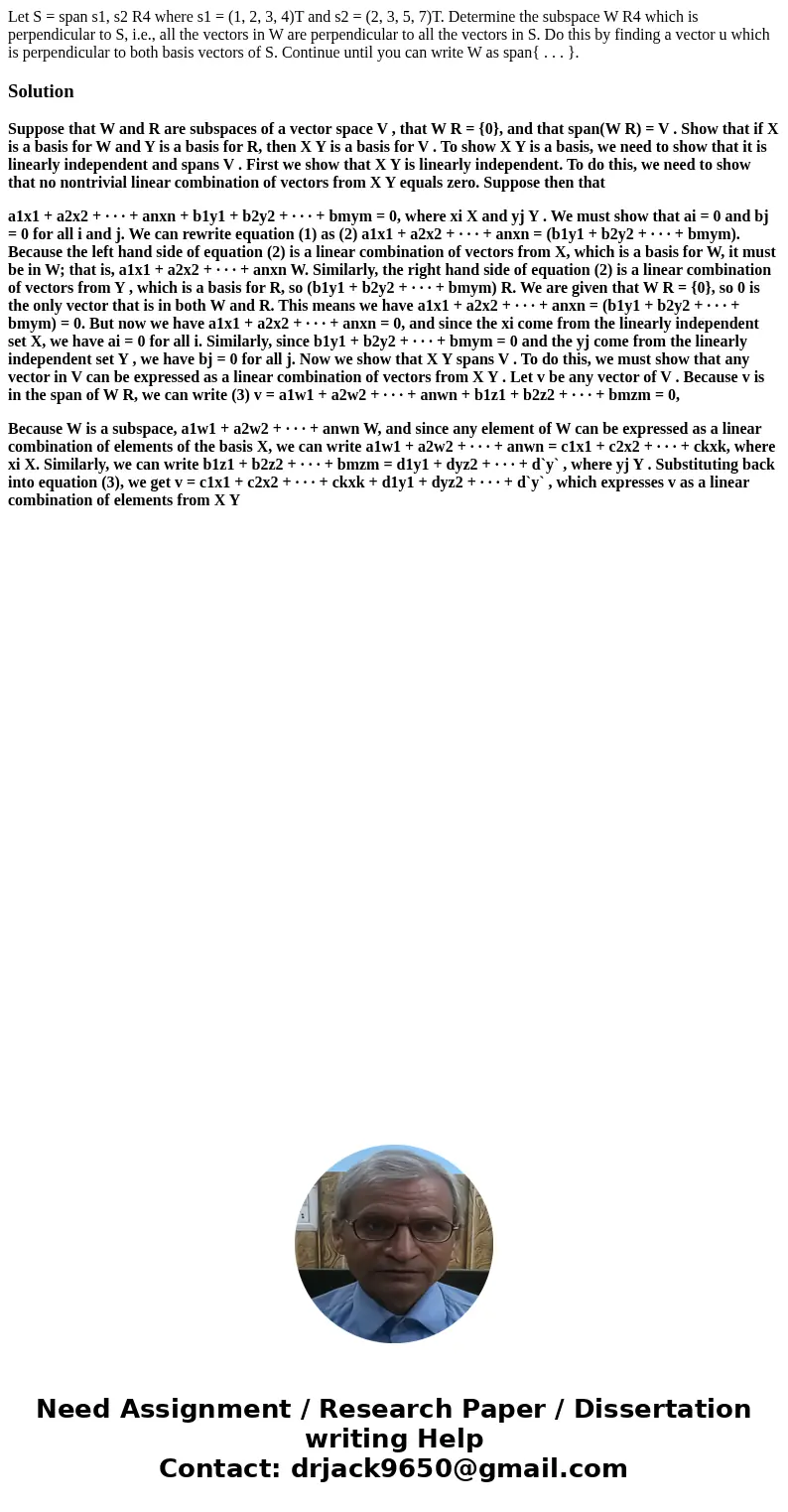Let S span s1 s2 R4 where s1 1 2 3 4T and s2 2 3 5 7T Det
Let S = span s1, s2 R4 where s1 = (1, 2, 3, 4)T and s2 = (2, 3, 5, 7)T. Determine the subspace W R4 which is perpendicular to S, i.e., all the vectors in W are perpendicular to all the vectors in S. Do this by finding a vector u which is perpendicular to both basis vectors of S. Continue until you can write W as span{ . . . }.
Solution
Suppose that W and R are subspaces of a vector space V , that W R = {0}, and that span(W R) = V . Show that if X is a basis for W and Y is a basis for R, then X Y is a basis for V . To show X Y is a basis, we need to show that it is linearly independent and spans V . First we show that X Y is linearly independent. To do this, we need to show that no nontrivial linear combination of vectors from X Y equals zero. Suppose then that
a1x1 + a2x2 + · · · + anxn + b1y1 + b2y2 + · · · + bmym = 0, where xi X and yj Y . We must show that ai = 0 and bj = 0 for all i and j. We can rewrite equation (1) as (2) a1x1 + a2x2 + · · · + anxn = (b1y1 + b2y2 + · · · + bmym). Because the left hand side of equation (2) is a linear combination of vectors from X, which is a basis for W, it must be in W; that is, a1x1 + a2x2 + · · · + anxn W. Similarly, the right hand side of equation (2) is a linear combination of vectors from Y , which is a basis for R, so (b1y1 + b2y2 + · · · + bmym) R. We are given that W R = {0}, so 0 is the only vector that is in both W and R. This means we have a1x1 + a2x2 + · · · + anxn = (b1y1 + b2y2 + · · · + bmym) = 0. But now we have a1x1 + a2x2 + · · · + anxn = 0, and since the xi come from the linearly independent set X, we have ai = 0 for all i. Similarly, since b1y1 + b2y2 + · · · + bmym = 0 and the yj come from the linearly independent set Y , we have bj = 0 for all j. Now we show that X Y spans V . To do this, we must show that any vector in V can be expressed as a linear combination of vectors from X Y . Let v be any vector of V . Because v is in the span of W R, we can write (3) v = a1w1 + a2w2 + · · · + anwn + b1z1 + b2z2 + · · · + bmzm = 0,
Because W is a subspace, a1w1 + a2w2 + · · · + anwn W, and since any element of W can be expressed as a linear combination of elements of the basis X, we can write a1w1 + a2w2 + · · · + anwn = c1x1 + c2x2 + · · · + ckxk, where xi X. Similarly, we can write b1z1 + b2z2 + · · · + bmzm = d1y1 + dyz2 + · · · + d`y` , where yj Y . Substituting back into equation (3), we get v = c1x1 + c2x2 + · · · + ckxk + d1y1 + dyz2 + · · · + d`y` , which expresses v as a linear combination of elements from X Y

 Homework Sourse
Homework Sourse